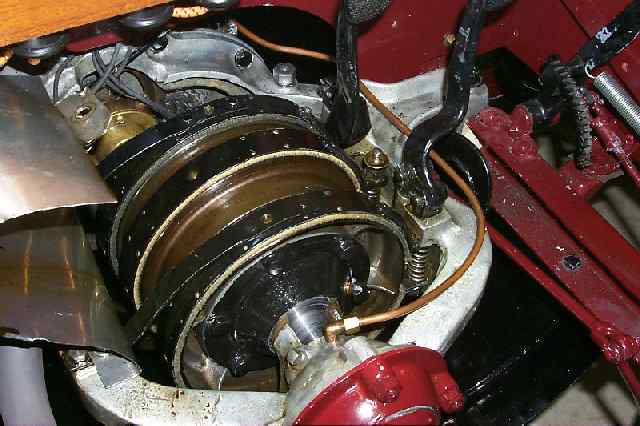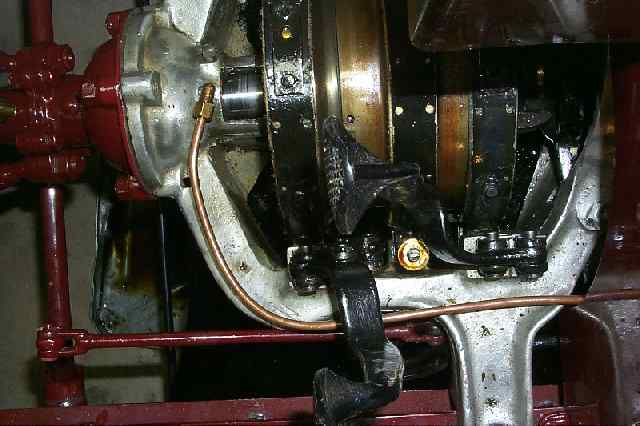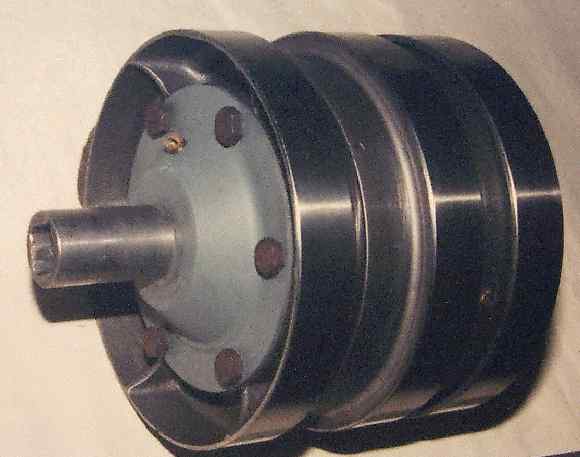
All Ford cars before the 1928 Model A used a transmission of the planetary type. Unlike its successor the Model T, the Model N's transmission is completely exposed to road dust and dirt. The transmission is controled by pulling a lever (high or low speed) or by stepping on a pedal (reverse or brake). Any of these operations contracted one the transmission bands shown in the photograph below. The contracting band stopped one of the three drums from rotating and caused a set of gears to come into operation that would shift the speed, put the car in reverse or stop it all together.

As you can see in the photo below, the mechanical connections between the pedals and the transmission bands are quite complex. It is a design that Rube Goldberg would be proud of. The oil line that delivers oil to the rear bearing drop by drop can also be seen.

It is lubricated by pumping a heavy grease (half 600 weight, half STP) into the center of the unit after removing two brass plugs, both of which are shown in the photo below. Interestingly enough the transmission were not made by Ford. Instead they were made by Henry Ford's business partners, the brothers John and Horace Dodge.

The complete transmission assembly weighs about 20 pounds. Lubricant is added by removing the two brass plugs shown in the picture. One at 12 O'clock by the transmission tail shaft, the second at about 3 O'clock between the first two drum. Transmission lubricant leaks out readily between the three drums, most of which is thrown up against the bottom of the floorboards by the rotation of the transmission. The rest ends up as a puddle on the "Drip Pan" the covers the bottom of the engine and transmission assembly.